As a responsible parent, you know that it's essential to have your child's car seat installed properly. So, it can be frustrating if you have problems doing this successfully. One potential problem you can have is that the car seat slides around too much. If you're dealing with this, you're probably wondering why it's happening and how to fix it. We've done the research and can answer these questions for you!
Your child's car seat shouldn't slide more than one inch in any direction once installed correctly. If it's moving more than this, you should check that the seatbelt or LATCH system is pulled tightly. You can also use a seatbelt lock or shortener to help secure the car seat.
Having a properly installed car seat is the best way to protect your children from any potential accidents. Keep reading to learn more about how to put them in, what tools can help you, and more!
Why Is My Car Seat Sliding?
If your child's car seat is sliding, there's a good possibility that the LATCH system or seat belt isn't pulled tightly enough.
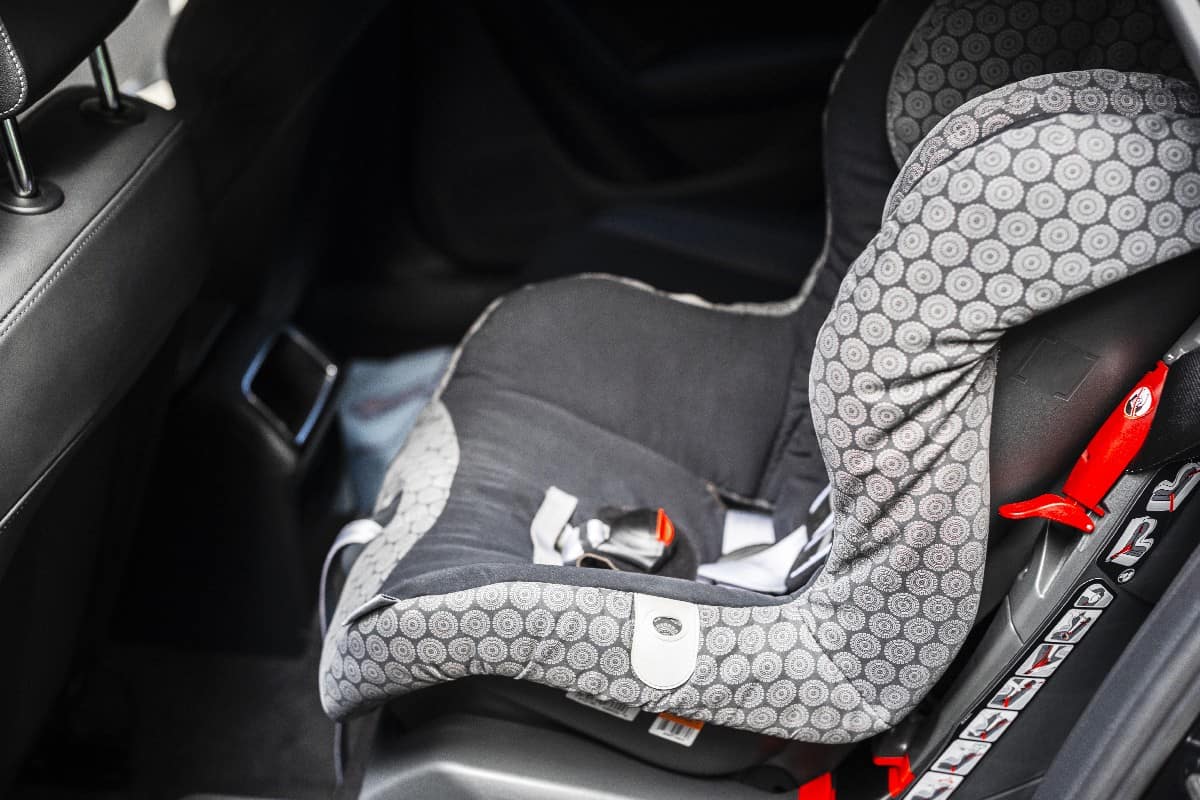
When a car seat is properly installed, the seat will move no more than an inch from side to side and front to back. If it moves more than that and you get in an accident, your child is at risk of injuring their face because their seat moved too much.
The first thing you should do if your car seat is sliding is to check that it's installed correctly. Decide on whether you are securing the seat via the LATCH method or seat belt. Depending on your vehicle, the car seat, and if your seat will be rear- or forward-facing, you may not be able to use both methods.
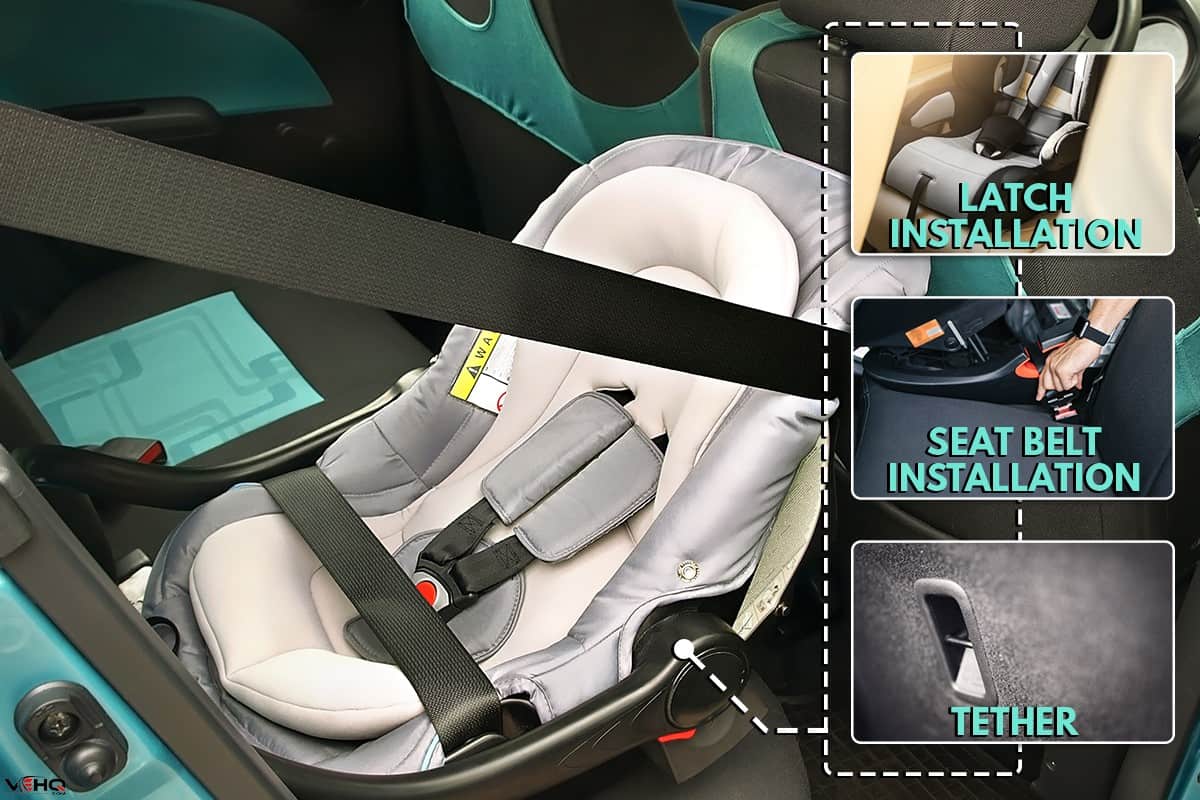
LATCH Installation
The LATCH installation system in cars is a way to secure car seats without using the seat belt. To properly use this method, you have to be sure of a few things.
You first need to locate the lower attachment points. Then, determine which direction the clips need to be facing. Once everything is in the correct position, you can work on tightening the straps.
You should ensure the car seat is flush against the back seat. If your seat isn't flush, then you won't be able to secure it properly.
It may be possible to put a rolled-up towel between the back of the seat and the car seat. This can help minimize movement, but you'll need to check your car seat manual to see if this is possible for you.
As you tighten the LATCH restraint, ensure that the straps are flat, and push your car seat against the chair as you tighten.
Test how much the seat moves with your non-dominant hand. You don't want to use too much force because that can cause you to over-tighten. Tighten the lower anchor straps until the seat moves no more than one inch from side to side.
Seat Belt Installation
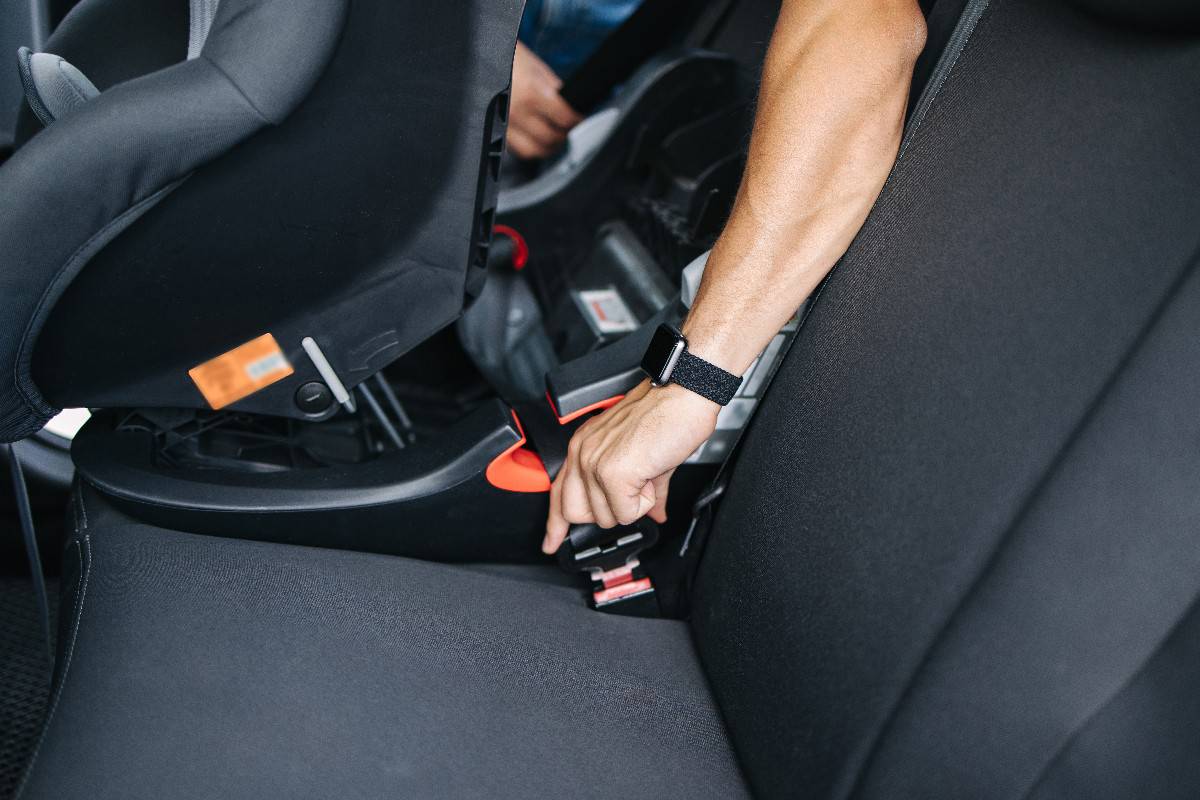
You can also use your vehicle's seat belt to secure the car seat. Make sure you properly store the LATCH restraints before using the seat belt. Unless your manual specifies otherwise, you can't use both the LATCH system and seat belt to hold the car seat.
After the LATCH straps are out of the way, you can thread the seat belt through the car seat. Keep the belt free from tangles, and then buckle it into the appropriate spot in your car. You'll then need to tighten the seat belt and lock it so the car seat moves no more than an inch.
Certain vehicles allow you to lock the seat belt automatically. You can do this via the shoulder belt or the lap belt.
You can test to see if your car has a locking shoulder belt by fully extending the seat belt. Then, you'll slowly feed approximately nine inches of the belt back into the vehicle. Then, gently pull the belt out again. If you can quickly move the shoulder piece, then it doesn't automatically lock in this manner.
Other vehicles have a locking mechanism at the latch plate. To test this, you'll need to buckle the seat belt, then pull on the lap webbing. If it doesn't move, then it locks here, and you can properly secure your car seat. If your belt doesn't lock in either of these methods, you'll have to purchase a separate locking device.
Regardless of your locking method, you'll have to ensure the car seat doesn't move more than one inch from side to side. Pull the belt tight as you push the car seat firmly into the seat. Make sure you lock the belt by pulling the shoulder belt or with a locking clip. Then, test the car seat and adjust it as necessary.
Check out these car seat locking clips on Amazon.
Tether
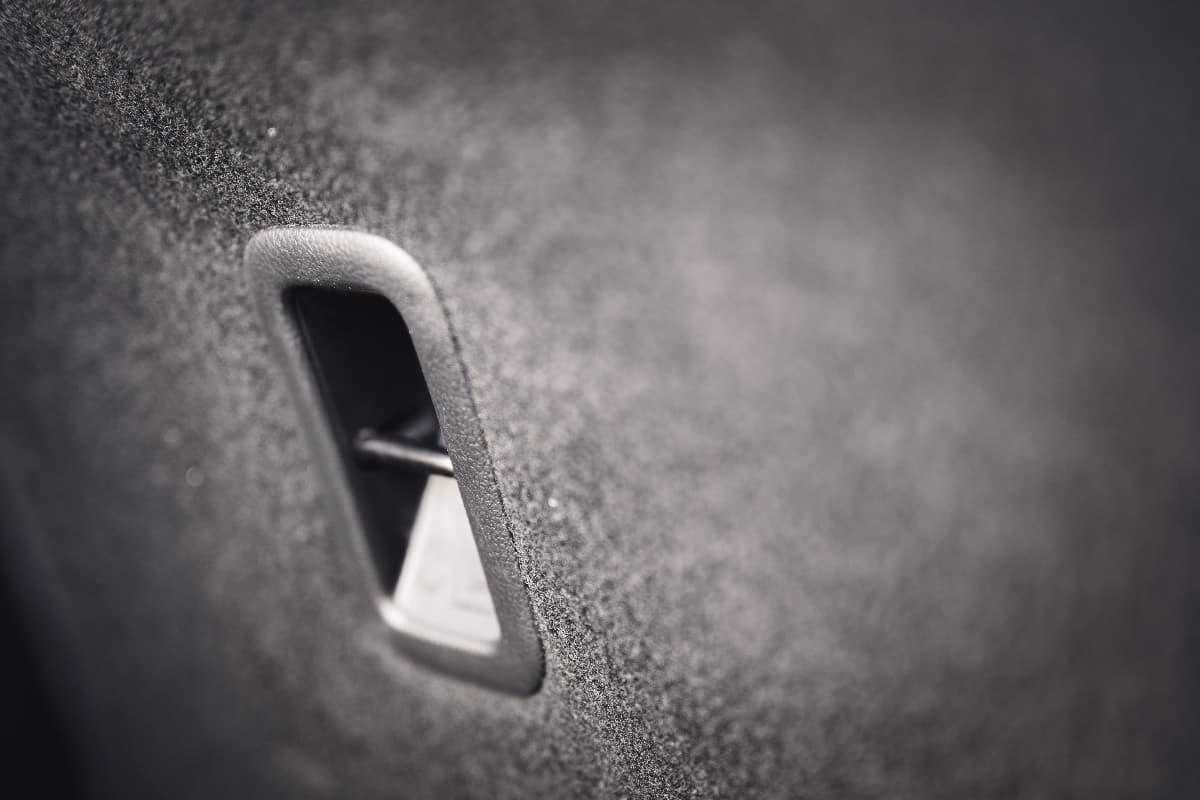
If you have a forward-facing car seat, you should also use the top tether. This tether is found towards the top of the car seat and can be attached to the car in several places.
Depending on your car, you can attach the car seat to the ceiling, the back shelf, or behind the seat. Some car seats have markings to indicate that it's a tether point. You can also check your car's manual to help find it.
Attach your car seat to the correct spot and then tighten it. Be sure to keep the webbing free of tangles. As you tighten, occasionally check to see how much the car seat can move.
Your car seat shouldn't move more than one inch forward and backward. After the seat is secured, you'll need to secure the extra webbing. Check your car seat manual to determine how to keep this piece safe from your child.
Can You Use Anti-Slip Mat Under A Car Seat?
There are many different car seat protectors, and some also have non-slip properties. The problem with these products is that car seat manufacturers don't always approve of them.
The effectiveness of your car seat can be reduced if you have a mat in between the two seats. A non-slip mat can also make it seem like the car seat is installed properly when it isn't.
Some car seats do allow you to use a protective layer. Check your car seat manual to see if this can be an option for you.
What Are Some Common Car Seat Mistakes?
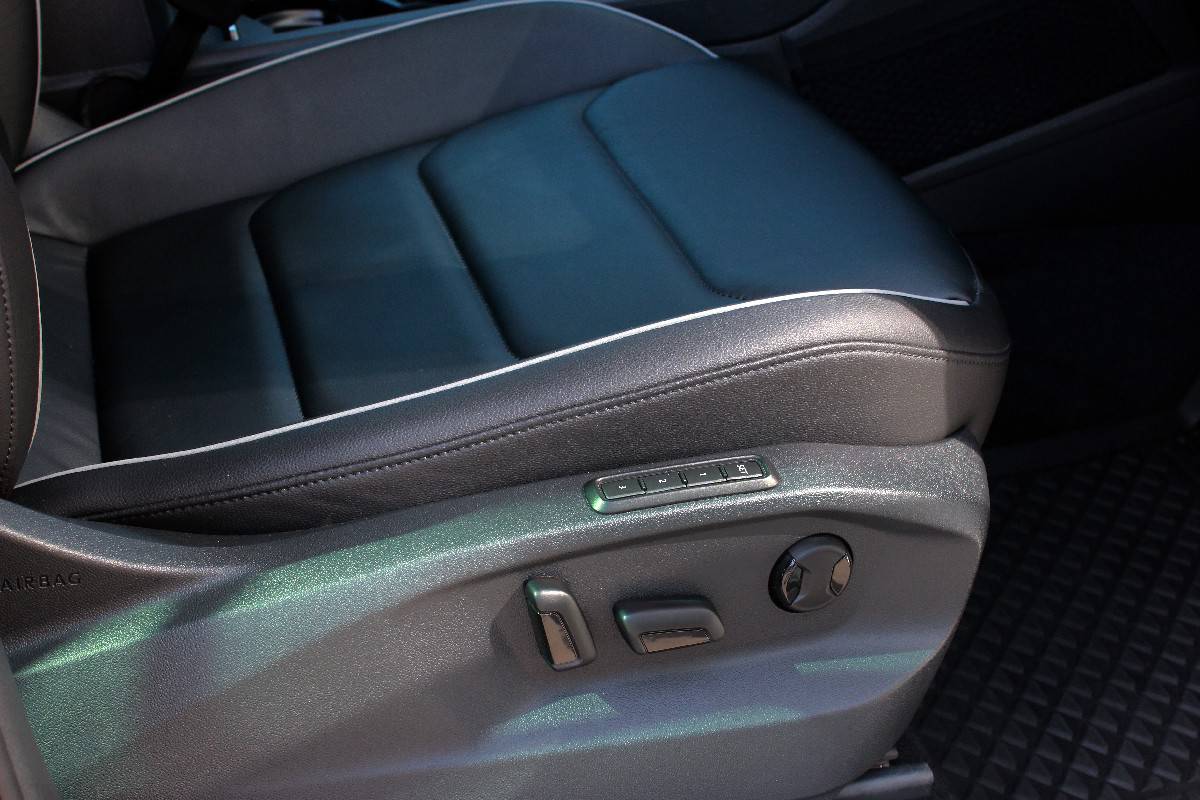
Many car seats are convertible so that they can grow with your child. These products will have several points where you can thread the seat belt through to secure the car seat.
Unfortunately, if you're not careful, you can accidentally put the seatbelt in the incorrect position. Always double-check your car seat manual when installing it to avoid this mistake.
Another common error with installing car seats is for rear-facing children. It's important to put the seat in at the correct angle. The exact range will vary, but it's usually between 30 and 45 degrees. Most car seats have an indicator on the side to show you if you're in the right range.
Using both the LATCH system and a seat belt is another common mistake people make when installing car seats.
Both methods are equally secure when used individually and within their limitations. LATCH systems shouldn't be used when the child and car seat weight exceeds 65 pounds. At that point, you should switch to using just the seat belt and top tether to anchor your car seat.
Unless your manual specifies otherwise, using both methods to secure your car seat can cause it to malfunction. When testing car seats, the manufacturers will test using only the LATCH system and only the seat belt. Using both can cause stress to the wrong points of the car seat and make it ineffective.
In Closing
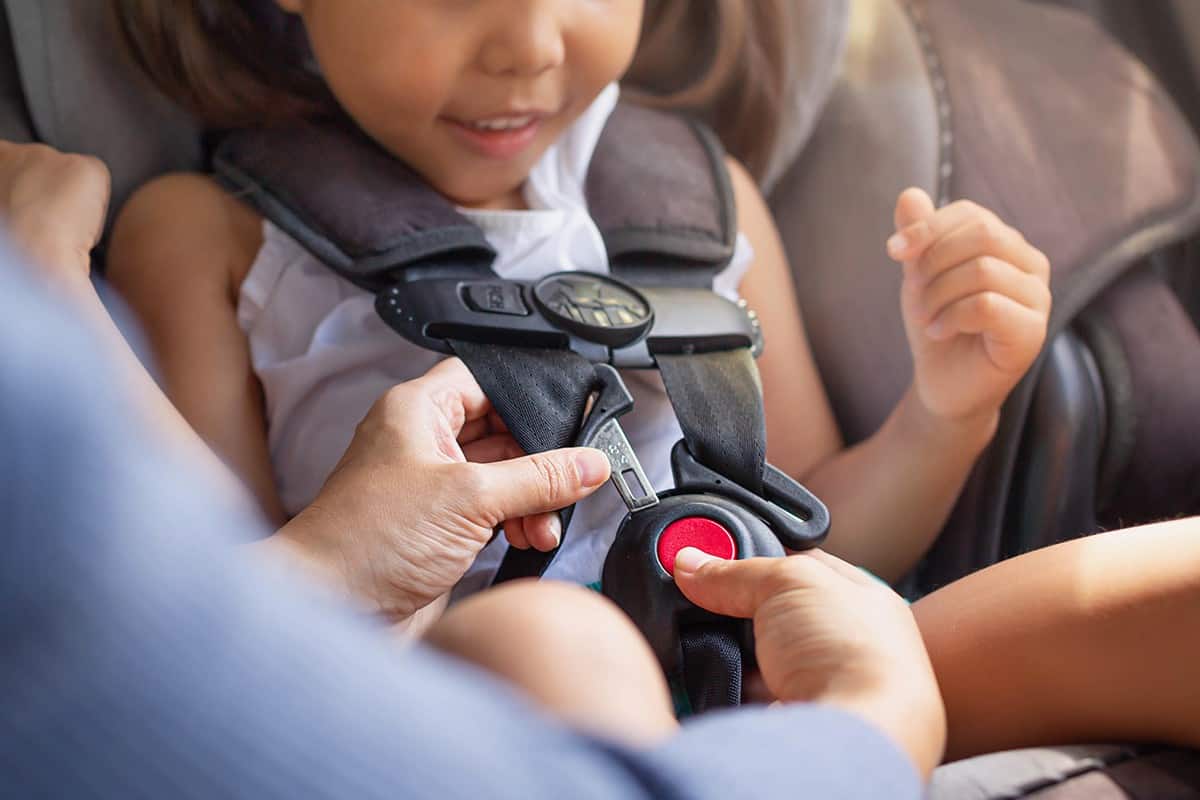
It's okay if your child's car seat slides around a little bit. Having around an inch of space to move can help protect the seat in case of an accident. However, you should check your installation if the seat moves more than one inch in any direction. Be sure to tighten the LATCH, upper tether, or seat belt until your car seat is secured correctly.
Check out these other great posts:

